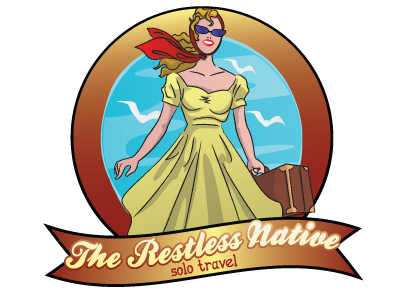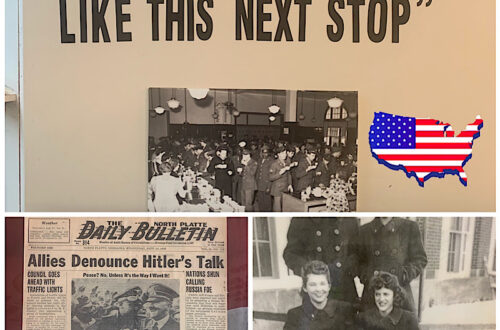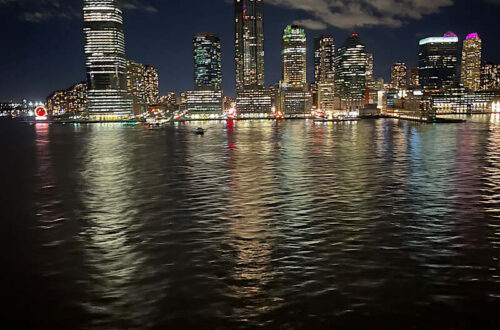Gliding easily into the Caribbean and packing away winter clothes
Life onboard after New York has settled into a different rhythm – the weather is warmer as we sail south and we have expanded out onto decks. Those wanting a tan to show for their winter holiday have begun staking out lounge chairs, and there is now music out on deck.
Since New York, there has also been a spike in covid cases. The infected passengers and crew are in isolation for a minimum of 6 days and then tested daily after that. Masks are now mandatory while moving about in public areas and sitting at bars are no longer permitted. I assume this will be the situation until the numbers go down. As long as we continue forward, I’m resigned to do whatever is needed to keep traveling.
During the past few sea days, I mostly passed the time reading and attending lectures about our upcoming transit of the Panama Canal. There were a series of excellent topics that covered the desire for a shorter route from the Caribbean to the Pacific since the time of the conquistadors. I also attended lectures about the pirates that plundered the Caribbean. Also very interesting and well researched. I must say that CUNARD does an excellent job of hiring well-informed speakers on board for insight lectures. These are usually very well attended, and something I think regular passengers have come to expect from this line. As a result, the three sea days between New York, and St. Maarten went very quickly.

We docked in Philipsburg on the Dutch side of St. Maarten. I’ve been here before, although oddly, I don’t remember much about it. But I had not been to the French side of the island so I booked a tour that included rum tasting and a cooking demonstration of some traditional island food. As we drove across the island from the Dutch side to the French side it was easy to spot the differences between the two mostly via language change. The two sides of the island are separate governments, currency, and even use different electrical voltage (110 for the Dutch side and 220 for the French).

The restaurant where my presentation was to take place is called 978 and they make their own rum. The main ingredient for the rum is guava berry and is nothing like the fruit I grew up, eating and picked in the wild. These are very small, bright, red, and apparently excellent for fermenting and making rum. We tried four different kinds of rum: passionfruit, ginger, ginger and passion fruit, and just fermented guava berry. My favorite was the ginger and I bought a small bottle to take back on the ship since I have a little bit of a cough 😁.
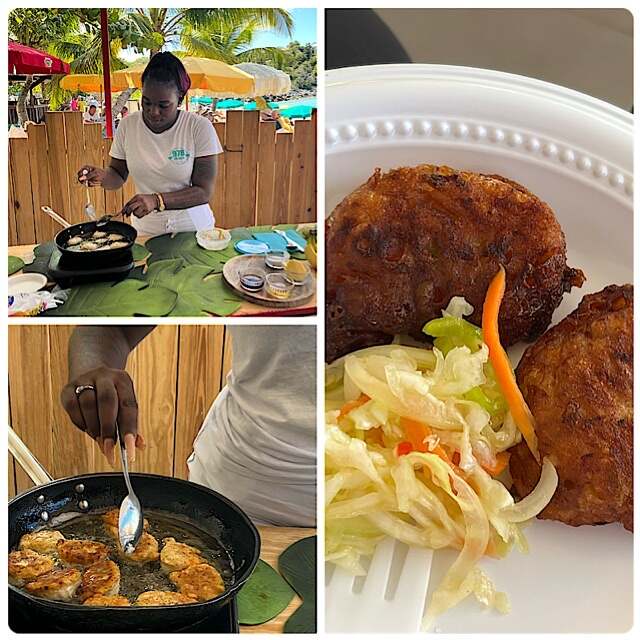
For a cooking demonstration we had fish cakes, made with salted cod. While a traditional dish for this island, they are likely a throwback to times before refrigeration, and brought in by colonists from Europe, since cod is not a warm water fish, therefore not available in the Caribbean. I’ve had salted cod cakes in Portugal and sadly was not a fan. They were basically salted cod,rinsed to remove the salt, then mixed with potatoes and onions. However, these were delicious. Our host mixed the cod with red and green bell peppers, onion, carrot, thyme and hot peppers. They were delicious and similar to how we would make conch fritters in Florida.
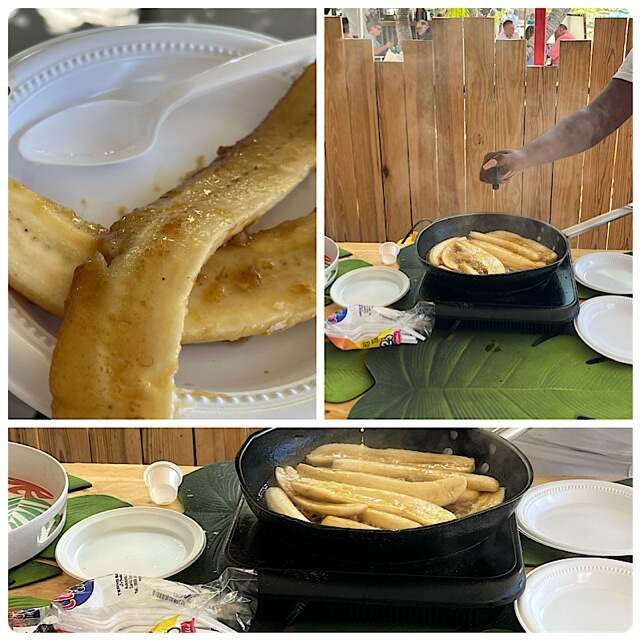
We finished the meal with bananas cooked in butter and rum then flambéed in more rum. Very little to dislike about bananas, butter and rum.
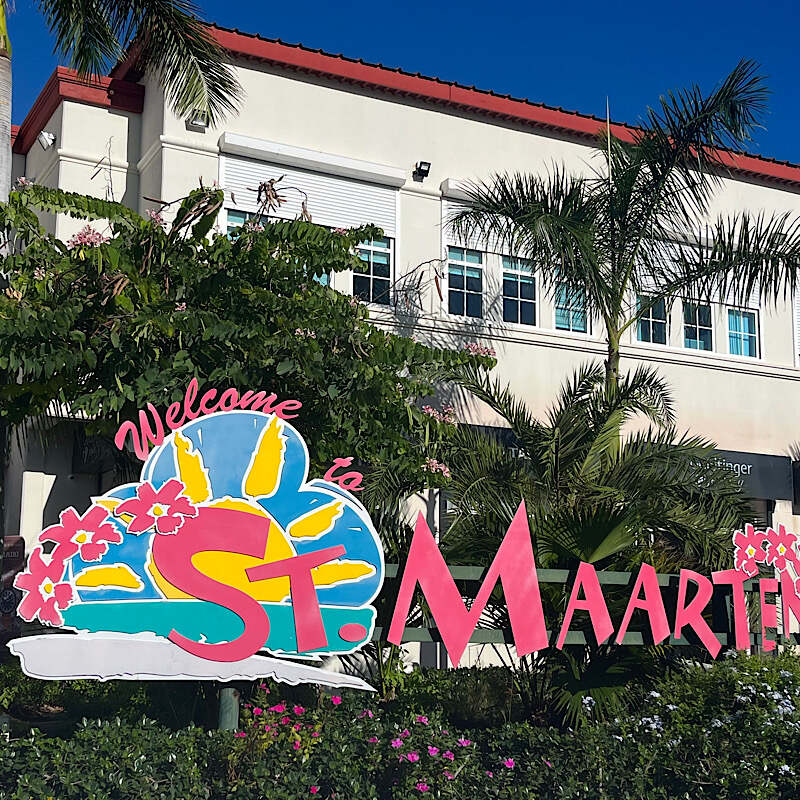
I got to see more of the island then I would have just walking around the waterfront. I enjoy trying local food, and on this trip I also got a great commentary about local flora and fauna from the bus driver.
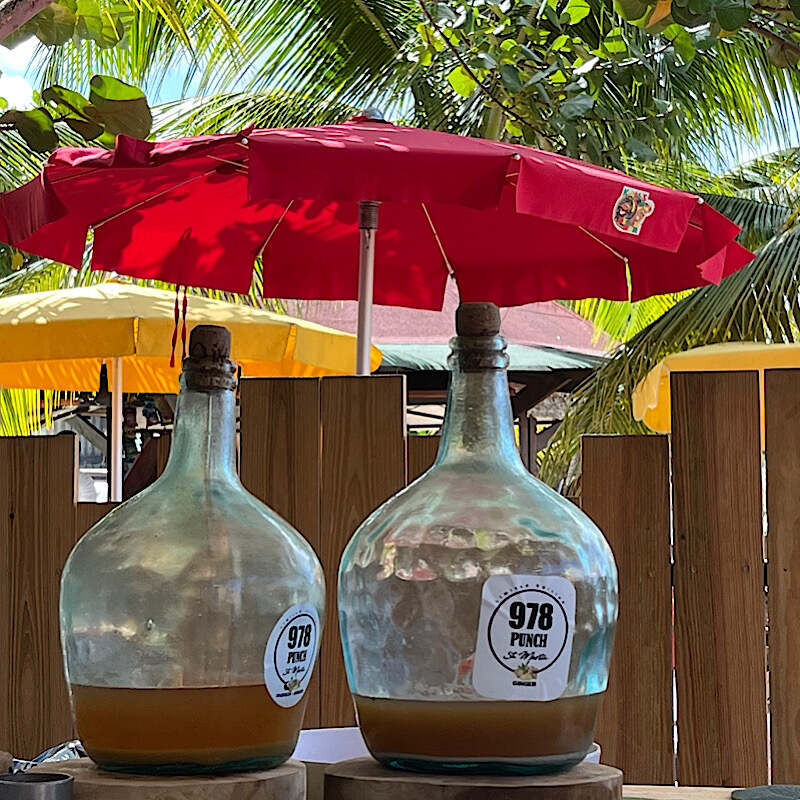
I have never been to Aruba, which is our next stop. Aruba is also our last stop in the Caribbean before we pass through the Panama Canal into the Pacific Ocean. I’m really excited about the next leg of the voyage. Life is good y’all.

